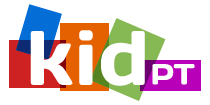

- Call 908 543 4390
- Email
- Dr.Joni Redlich PT,DPT


This is the third part of The Balance Series. In the first part we reviewed the components of balance. In the second part we discussed the various vestibular dysfunctions that can occur in children. In this last article we will look at the different components of treatment.
Vestibular rehabilitation is a specific type of therapy designed to specifically treat vestibular disorders in adults or children. It is not the same as sensory integration therapy. Physical or occupational therapists with specialized training provide vestibular rehab. The goals of treatment will depend on the needs of the individual, but may include facilitating integration of reflexes, tolerance for visual motion, motor skills and coordination, learning skills, attentional abilities, balance reactions and movement patterns, promote sensory organization, facilitate sensory processing, decrease or eliminate dizziness, and normalize oculomotor control.
During each treatment session a child with vestibular dysfunction would participate in a combination of ocular motor (VOR), balance (VSR/reflex integration), and head/body movements. Activities are modified to be age appropriate for children from infancy through adolescence.
Vestibular rehab treatment interventions may include:
Vestibular disorders can be very responsive to vestibular rehab. Once the proper diagnosis has been attained it is important to initiate vestibular rehab as soon as possible in order to limit compensations the body develops.

 Part 1: NDT and the Physical Therapy Community
Part 1: NDT and the Physical Therapy Community 
Trackbacks & Pingbacks
[…] Part Three: Vestibular Rehab for Children […]
Leave a Reply
Want to join the discussion?Feel free to contribute!